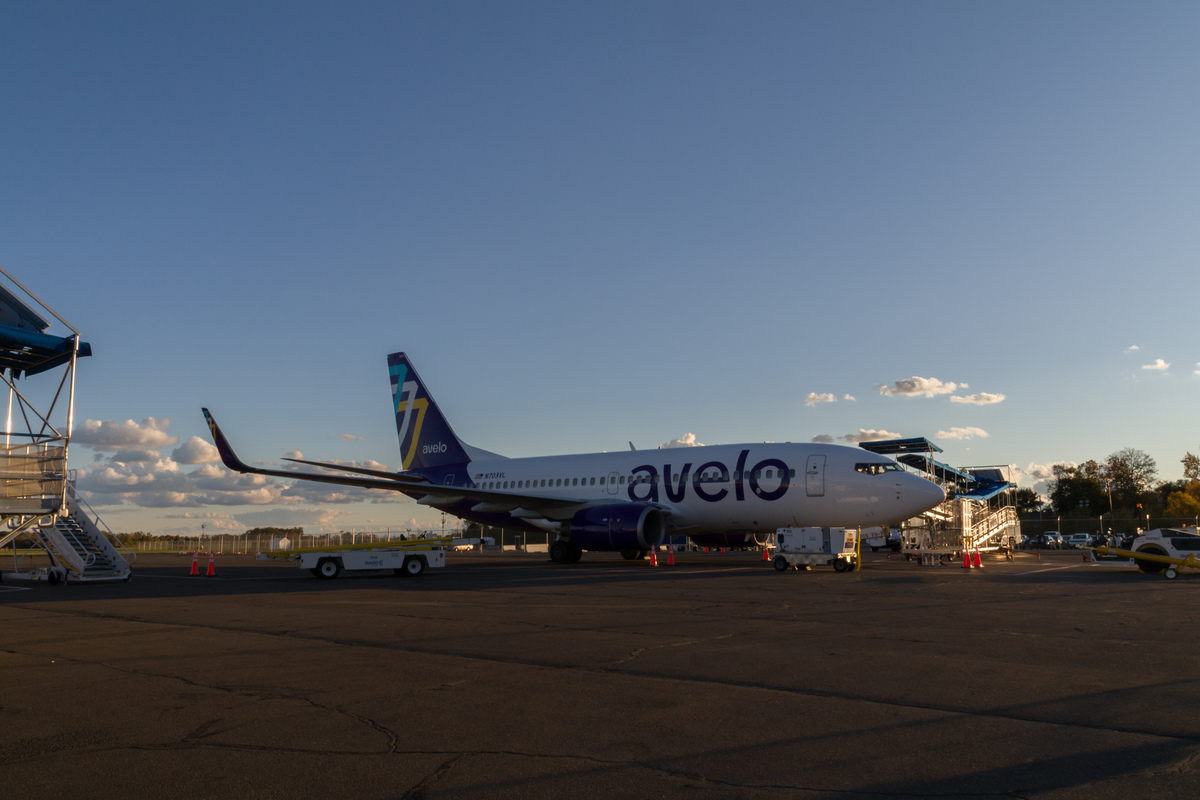Tweed hosts public forum on expansion environmental assessment
The New Haven airport heard questions and comments from community members as it starts the environmental assessment process to extend the runway and add a new terminal.

Zoe Berg, Photo Editor
On Thursday night, the Tweed-New Haven Airport Authority hosted its first public forum on the environmental assessment they will conduct for their proposed airport expansion. Community members expressed concerns about how the expansion would affect public health, local wetlands and flooding in nearby neighborhoods.
The New Haven Board of Alders unanimously approved a 43-year lease between the city and Tweed-New Haven Airport on Sept. 23. The agreement opens the door for a considerable expansion of the existing airport, which includes extending the airport’s runway to 6,635 feet of pavement and building a new terminal near East Haven. The Federal Aviation Administration has approved these plans. Tweed has hired McFarland Johnson, Inc. to conduct an environmental assessment on the proposed expansion in accordance with the National Environmental Policy Act, or NEPA, which includes studying the environmental, social and economic consequences of the proposed expansion.
On Thursday night, Jeff Wood, McFarland Johnson Vice President and Regional Director of Aviation, stressed that the purpose of the public forum was to hear community feedback on the process and methodology of the ongoing environmental assessment.
“The goal tonight is to have a dialogue,” Tweed Airport Executive Director Sean Scanlon added.
The first component of an environmental assessment is the “purpose and need” for the project, which includes a cost-benefit analysis. The assessment also delineates alternatives to meet the project’s goals. The final document will outline the environmental consequences of the proposed airport expansion.
McFarland Johnson has begun its assessment with a wetland delineation, which establishes the location and size of a wetland area around the perimeter of the airport, in accordance with the Connecticut Department of Energy and Environmental Protection and United States Army Corps of Engineers requirements. It also considers habitats, the locations of endangered species and water quality.
In Connecticut, wetland delineations must be prepared by a certified scientist. Wood reported that the results from this wetland delineation should be available soon, which will clarify permit requirements and any litigation measures that may be required for the airport expansion.
McFarland Johnson must use the FAA-approved noise model, called the aviation environmental design tool, to gauge noise at the airport based on airport layout, type of aircraft and aircraft flight tracks based on radar data. Federal regulations also require Tweed to describe the 24-hour average noise exposure from the airport. Noise emanating from the airport between 10 p.m. and 7 a.m. is weighed 10 times as loud as noise during the day.
NEPA also enforces air quality requirements. For air quality, McFarland Johnson will examine operations emissions from the airport, such as when planes taxi, take off and land. In addition, the airport will report the expected greenhouse gas emissions resulting from the construction of the proposed expansion so that construction activity associated with the project will be considered in air quality requirements.
The proposed airport expansions’ effect on air quality, which in turn affects public health, was a primary concern voiced by community members on Thursday night.
“Urban areas have been fighting against smog and we are looking at increasing smog, and I think that’s ridiculous,” said Rachel Heerema, an organizer with 10,000 Hawks, an environmental conservation organization that has opposed the Tweed airport expansion. She called for hyperlocal research on the current health conditions of residents in New Haven and East Haven. “We need to look at this as an epidemiological issue. We’re looking at respiratory health, cardiovascular health, cancer risks and immune health,” she continued.
A Yale Law School study published in 2017 found that asthma rates in New Haven’s lower-income neighborhoods — Dixwell, Fair Haven, Hill North, Newhallville, West River and West Rock — increased from 20 to 23 percent between 2009 and 2015, with asthma rates higher for female, Black and Latino residents. New Haven also reports the highest rate of asthma hospitalizations in Connecticut: 75 per 10,000 residents compared to the state average of 14 per 10,000 residents.
The construction of a new terminal on the east side of the airport will also change traffic patterns. Wood said that 11 intersections will be affected by the relocation of the terminal. McFarland Johnson will conduct traffic counts under existing conditions and then calculate what is called “trip generation,” Wood said, which will map out how visitors to New Haven travel to and from the airport before and after their flights. Then, McFarland Johnson will evaluate where traffic delays occur with the Connecticut Department of Transportation.
Relocation of the terminal to the east side may affect access to Proto Drive in East Haven.
“Taxpayers and residents own that land,” said East Haven resident Lorena Venegas, which was met with applause. “We’re not going to give up Proto Drive.”
Wood reported that the studies on wetlands and flora and fauna surrounding the airport are almost complete, while traffic and noise studies are in their earlier stages. McFarland Johnson expects these studies to be completed by winter and to have a draft of the environmental assessment ready for public comment in the spring.
Interested in getting more news about New Haven? Join our newsletter!







